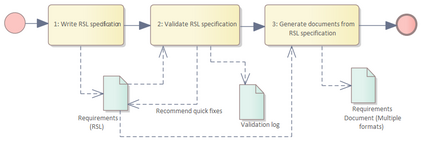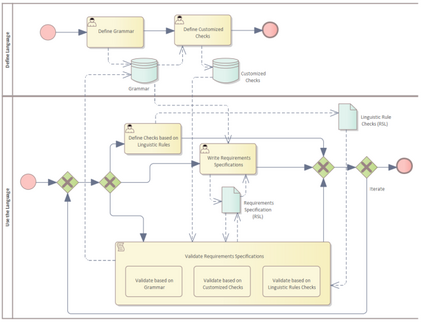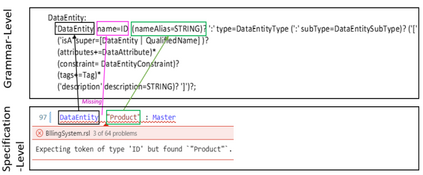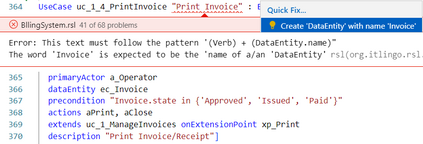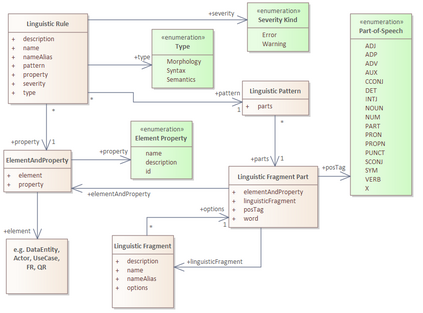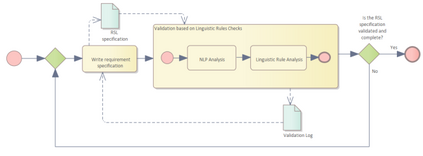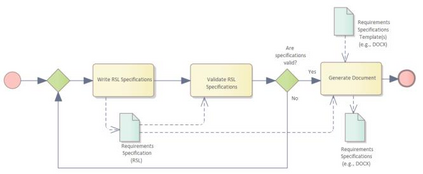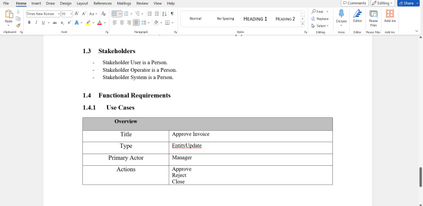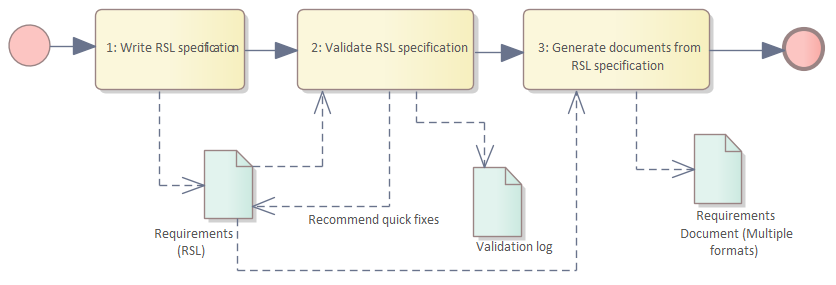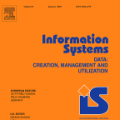Despite being an essential step in software development, writing requirements specifications is frequently performed in natural language, leading to issues like inconsistency, incompleteness, or ambiguity. The ITLingo initiative has introduced a requirements specification language named RSL to enhance the rigor and consistency of technical documentation. On the other hand, natural language processing (NLP) is a field that has been supporting the automatic analysis of requirements by helping to detect issues that may be difficult to see during a manual review. Once the requirements specifications are validated, it is important to automate the generation of documents for these specifications to reduce manual work, reduce errors, and to produce documentation in multiple formats that are more easily reusable or recognized by the different stakeholders. This paper reviews existing research and tools in the fields of requirements validation and document automation. We propose to extend RSL with validation of specifications based on customized checks, and on linguistic rules dynamically defined in the RSL itself. In addition, we also propose the automatic generation of documents from these specifications to JSON, TXT, or other file formats using template files. We use a fictitious business information system to support the explanation and to demonstrate how these validation checks can assist in writing better requirements specifications and then generate documents in multiple formats based on them. Finally, we evaluate the usability of the proposed validation and document automation approach through a user session.
翻译:暂无翻译

